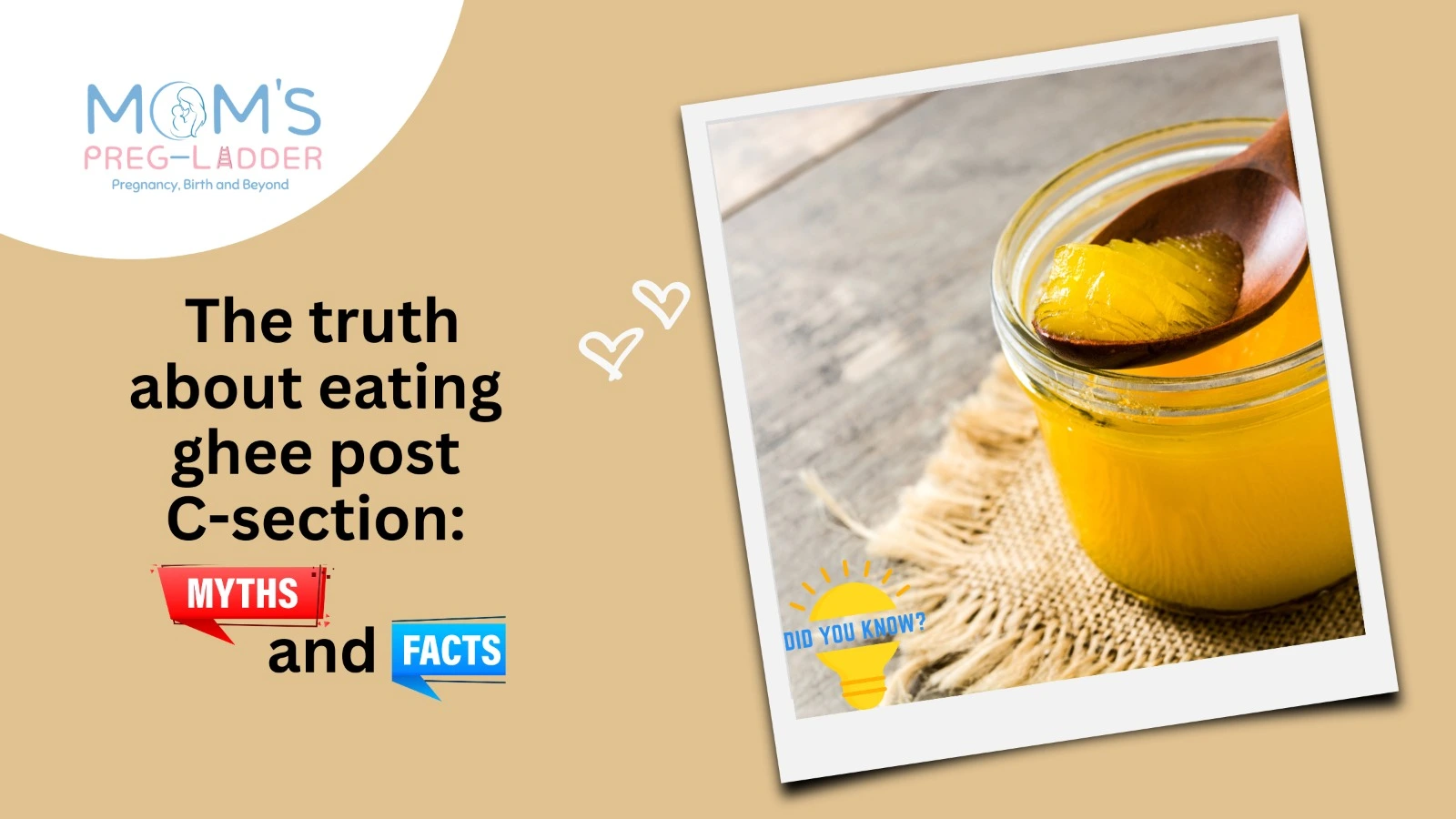For generations, new mothers have been guided by well-intentioned advice from older family members about what to eat and what to avoid after delivering a baby via cesarean section. Common items often listed under “do not eat” include milk, ghee, and rice. Such dietary restrictions are rooted in the belief that these foods could impair the healing of scars or cause other post-operative complications. However, modern medical advice often contradicts these traditional beliefs, emphasizing a return to a balanced diet soon after surgery.
Let’s discover the truth and demystify false notions surrounding the consumption of ghee after a C-section.
What is Ghee?
Ghee is clarified butter, a common ingredient in South Asian cuisine. It is made by simmering butter, which is then strained to remove all water content, milk solids, and impurities. The resulting product is a pure combination of fats with a rich and nutty flavour. In many Indian households, ghee is revered not only for its taste but also for its purported health benefits.
Myth: Ghee Leads to Poor Scar Healing
A prevalent myth among many communities is that consuming ghee after a cesarean section can lead to poor healing of the surgical wound. The belief is that ghee, being a rich and heavy fat, might exacerbate internal inflammation or interfere with the healing process.
Fact: Nutritional Benefits of Ghee
Contrary to the myth, ghee contains a significant amount of butyric acid, a type of fatty acid that has anti-inflammatory properties. Consuming ghee can actually help in reducing inflammation throughout the body and support the healing process. Moreover, ghee is rich in fat-soluble vitamins such as A, E, and D, which are crucial for skin health and recovery.
Medical Advice on Post-C-Section Diet
Medical professionals generally advise that most women can resume a normal diet soon after a C-section unless there are specific complications that require dietary adjustments. A balanced diet helps in recovery by providing essential nutrients necessary for wound healing and energy needs. This includes proteins for tissue repair, carbohydrates for energy, and fats for healing and hormone production.
No Direct Evidence Linking Ghee with Impaired Healing
There is no scientific evidence directly linking the consumption of ghee with impaired healing of scars post-cesarean. On the contrary, its anti-inflammatory properties might be beneficial. However, like all foods, ghee should be consumed in moderation. Excessive intake of fats can lead to other health issues such as obesity, which can indirectly affect recovery by putting additional strain on the body.
Cultural Perspectives and Modern Healthcare
While traditional practices and advice are often based on centuries of anecdotal experience, they may not always align with modern medical guidelines. It is essential for new mothers to consult with their healthcare providers to get tailored advice that considers both their medical condition and cultural practices.
Conclusion
Dispelling myths around post-C-section diets is crucial for the health and well-being of new mothers. Ghee, contrary to traditional beliefs, does not impair scar healing if consumed in moderation. Instead, it can offer significant nutritional benefits that may aid in the recovery process. New mothers should feel empowered to discuss their diet openly with healthcare providers to ensure a recovery plan that is scientifically sound and effective in producing the desired results.

